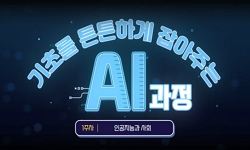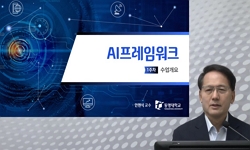음주운전은 전 세계적으로 심각한 문제로 인식되고 있으며, 특히 최근 5년 동안 한국에서는 일일 평균 48건의 음주운전 사고가 발생하여 많은 사망자와 부상자를 초래하는 등 교통 안전에 대...
http://chineseinput.net/에서 pinyin(병음)방식으로 중국어를 변환할 수 있습니다.
변환된 중국어를 복사하여 사용하시면 됩니다.
- 中文 을 입력하시려면 zhongwen을 입력하시고 space를누르시면됩니다.
- 北京 을 입력하시려면 beijing을 입력하시고 space를 누르시면 됩니다.

CNN과 GRU 모델을 활용한 음주상태 판별시스템 설계 및 구현 = Design and Implementation of an Alcohol Intoxication Detection System Using CNN and GRU Models
한글로보기https://www.riss.kr/link?id=A108897867
- 저자
- 발행기관
- 학술지명
- 권호사항
-
발행연도
2023
-
작성언어
Korean
- 주제어
-
등재정보
KCI등재
-
자료형태
학술저널
-
수록면
1-10(10쪽)
- DOI식별코드
- 제공처
-
0
상세조회 -
0
다운로드
부가정보
국문 초록 (Abstract)
음주운전은 전 세계적으로 심각한 문제로 인식되고 있으며, 특히 최근 5년 동안 한국에서는 일일 평균 48건의 음주운전 사고가 발생하여 많은 사망자와 부상자를 초래하는 등 교통 안전에 대한 중요한 문제로 부상하였다. 이를 해결하기 위해 본 논문에서는 CNN(Convolutional Neural Network)과 GRU(Gated Recurrent Unit)를 결합한 인공지능 모델을 활용하여 음주상태를 식별하는 방법을 제시하였다. 제안한 모델은 이미지에서의 복잡한 특징과 특징들 사이의 시간적 연속성을 인식하므로, 음주 상태 판단에 효과적이다. 본 연구는 교통 안전에 대한 새로운 관점을 제시하며, 향후 인공지능을 활용한 차량 운전자의 음주 상태 감지와 그에 따른 교통사고 예방에 있어 중요한 기초자료를 제공한다. 또한, 제안한 모델은 실시간 모니터링 및 조기 경보 시스템에 적용될 경우 음주운전과 관련된 교통사고 등을 사전에 방지할 수 있을 것으로 기대한다.
다국어 초록 (Multilingual Abstract)
Drunk driving is recognized as a serious problem worldwide, and especially in Korea, it has emerged as a crucial issue for traffic safety with an average of 48 daily alcohol-related accidents resulting in numerous fatalities and injuries over the past...
Drunk driving is recognized as a serious problem worldwide, and especially in Korea, it has emerged as a crucial issue for traffic safety with an average of 48 daily alcohol-related accidents resulting in numerous fatalities and injuries over the past five years. In this paper, a new method for identifying an alcohol intoxication by combining CNN(Convolutional Neural Network) and GRU(Gated Recurrent Unit) models is proposed. The proposed model effectively captures the complex features in images and their temporal continuity, making it effective in determining alcohol intoxication. In the training phase, data collection and storage, video segmentation and preprocessing, labeling of alcohol consumption status, traing of YOLOv4 model, and utilization of a hybrid CNN-GRU model steps are composed. In the classification phase, user video input reception, video segmentation, image preprocessing and feature extraction, and alcohol intoxication status determination steps are composed. As a result, we have developed a model for alcohol intoxication classification based on CNN, YOLOv4, and GRU, and constructed a system that provides a web environment. Furtheremore, the proposed system demonstrates outstanding scalability by offering web services to enhance user-friendliness. The proposed method provides a new perspective on traffic safety and serves as important foundational material for application of AI-based detection of alcohol-intoxicated drivers and prevention of associated accidents. Furthermore, the proposed model is expected to proactively prevent alcohol-related accidents when applied to real-time monitoring and early warning systems.
참고문헌 (Reference)
1 "https://www.koroad.or.kr/main/board/6/7272/board_view.do?&cp=5&listType=list&bdOpenYn=Y&bdNoticeYn=N"
2 "http://weekly.chosun.com/news/articleView.html?idxno=25672"
3 K. Simonyan, "Very deep convolutional networks for large-scale image recognition"
4 R. Collobert, "Natural language processing(almost)from scratch" 12 : 2493-2537, 2011
5 K. Cho, "Learning phrase representations using RNN encoder-decoder for statistical machine translation" Association for Computational Linguistics 2014
6 A. Krizhevsky, "Imagenet classification with deep convolutional neural networks" 60 (60): 84-90, 2017
7 M. Kim, "High Performing Facial Skin Problem Diagnosis with Enhanced Mask R-CNN and Super Resolution GAN" 13 (13): 989-, 2023
8 H. Liu, "Hierarchical representations for efficient architecture search"
9 X. Shu, "Hierarchical Long Short-Term Concurrent Memory for Human Interaction Recognition" 43 (43): 1110-1118, 2019
10 Y. LeCun, "Gradient-based learning applied to document recognition" 86 (86): 2278-2324, 1998
1 "https://www.koroad.or.kr/main/board/6/7272/board_view.do?&cp=5&listType=list&bdOpenYn=Y&bdNoticeYn=N"
2 "http://weekly.chosun.com/news/articleView.html?idxno=25672"
3 K. Simonyan, "Very deep convolutional networks for large-scale image recognition"
4 R. Collobert, "Natural language processing(almost)from scratch" 12 : 2493-2537, 2011
5 K. Cho, "Learning phrase representations using RNN encoder-decoder for statistical machine translation" Association for Computational Linguistics 2014
6 A. Krizhevsky, "Imagenet classification with deep convolutional neural networks" 60 (60): 84-90, 2017
7 M. Kim, "High Performing Facial Skin Problem Diagnosis with Enhanced Mask R-CNN and Super Resolution GAN" 13 (13): 989-, 2023
8 H. Liu, "Hierarchical representations for efficient architecture search"
9 X. Shu, "Hierarchical Long Short-Term Concurrent Memory for Human Interaction Recognition" 43 (43): 1110-1118, 2019
10 Y. LeCun, "Gradient-based learning applied to document recognition" 86 (86): 2278-2324, 1998
11 Yann LeCun, "Deep learning" Springer Science and Business Media LLC 521 (521): 436-444, 2015
12 Ossama Abdel-Hamid, "Convolutional Neural Networks for Speech Recognition" Institute of Electrical and Electronics Engineers (IEEE) 22 (22): 1533-1545, 2014
13 Y. Kim, "Character-Aware Neural Language Models" 2016
동일학술지(권/호) 다른 논문
-
실시간 스트림 데이터를 위한 새로운 익명화 알고리즘 제안
- 사단법인 한국융합기술연구학회
- 홍성현
- 2023
- KCI등재
-
연안 정지 관측 시계열 데이터 결측치 보정에 관한 실증연구: 주문진 관측소 중심으로
- 사단법인 한국융합기술연구학회
- 이세직
- 2023
- KCI등재
-
- 사단법인 한국융합기술연구학회
- 박성한
- 2023
- KCI등재
-
연관규칙을 활용한 KT/A-1 항공기 수리부속 재고 확보 방안
- 사단법인 한국융합기술연구학회
- 김창익
- 2023
- KCI등재




 KCI
KCI






